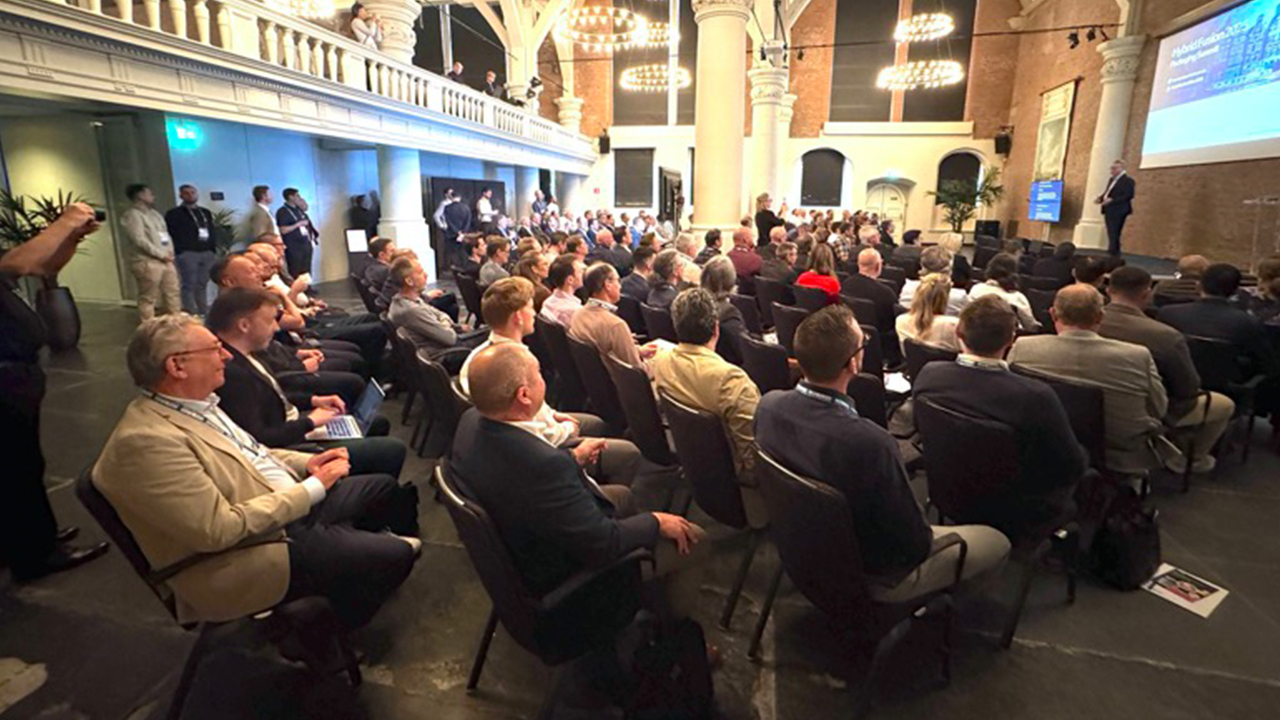Social Enterprise - the new ROI

New York’s OnDemand Expo showed Enterprise software taking a cue from consumer cloud, social and mobile programs. Danielle Jerschefske draws important lessons for label converters
Modern business software that mimics the consumer cloud and social realm, known as Social Enterprise software, is increasingly recognized as a key tool for improving customer service and employee interaction.
Among other advantages, it opens the doors to communication and drives down email volume, as information is being sent only to the people who need it. It improves the generation of ideas and increases employee connections, making your business smarter.
Yammer is one of many growing enterprise software companies bringing the power of secure social networking to the business enterprise, offering tools for improved company collaboration, file sharing, knowledge exchange and team efficiency.
Adam Pisoni, co-founder, CTO for Yammer told delegates to the OnDemand conference that the integration of ‘social’ tools that employees use regularly in their personal lives, like Facebook and Twitter, has been proven to enhance internal communication and productivity.
‘Employees want to be able to use the newest and latest. It used to be that they’d come to work to use the computers and software that an enterprise offered, but now they find themselves unable to connect via mobile in the middle of the Mobile Revolution.’
If a company is not aware of this situation, employees will find their own solutions, said Pisoni: ‘Business must learn how to use social technology to fulfill the mission of the company. Embrace volatility and unpredictability and close the gap with employees and their tools’.
Some businesses have implemented restrictive rules and guidelines around social media and file-sharing websites that often limit the capabilities of associates. ‘If you want to see where you’re most inefficient, then take a closer look at where your people are breaking the rules,’ advised Pisoni.
Whitney Tidmarsh Bouck is enterprise general manager at Box, an online file sharing system similar to Dropbox and used by international CPGs including P&G, Red Bull and Kiehl’s.
Bouck told delegates that the cloud, social networking and a web of integrated applications are on the verge of creating a far more personalized technology experience for tomorrow’s workers, and a world where an increase in data generates an increase in value and knowledge for organizations.
‘Social enterprise offers new opportunities to change business. Why should employees not be able to embrace social enterprise at work with clients and peers just like in personal life?’ Tidmarsh Bouck describes this as a ‘post-PC Era Enterprise period.’
Bouck encouraged IT professionals to reach out beyond the firewall. ‘This is the perfect storm. With the consumerization of IT, mobile and security, the old legacy of technology makes it difficult to share information, especially with outside organizations, impeding the transparency we’re looking for. It’s time to make the change.’
But it seems the IT community is reluctant to change. In a survey presented to delegates, 20 percent of IT professionals questioned were avoiding the cloud. Sixty percent were cautiously optimistic, while only 20 percent were enthusiastic adopters. Label converters will need to be on the cutting edge of this movement as the packaging industry looks to streamline the print approval process using mobile applications (see Esko box above).
Going mobile
Marketers of all sizes are working to transform traditional media into interactive and actionable communications using mobile technologies. Already we’re seeing QR codes and augmented reality used regularly in advertising as well as the label and packaging markets.
As this paradigm shift occurs, more converters will diversify their business into online marketing support for brand owners. Key will be the ability to optimize 2D barcodes for reliable mobile scanning and enabling brands to implement content sharing through the use of printed codes.
‘There are opportunities to integrate 2D tags into just about anything,’ said Matt Rees, senior consultant at InfoTrends.
A recent InfoTrends’ study, Mobile Technology: Making Print Interactive, found only limited investment in campaigns linking print to digital and mobile media channels, and suggested a huge opportunity going forward. Rees continued, ‘Print is a mass communication media channel. Such codes allow marketers to direct users back to mobile, driving them into granular niche targeted offerings. It’s about taking them from an offline format to online format. By doing so, a brand or business is better empowered to offer information that is pertinent to that specific user.’
Eddy Hagen, VIGC, for the Flemish Innovation Center for Graphic Communication shared knowledge of best practice for printing QR codes. ‘The code cannot be too small and I recommend that you not print the code in 4-color process. You’d need to have less than .5 mm in registration to have readable clarity. On coated stock, process printing might work, but definitely not on a matte or rougher substrate.’
Mobile marketing best practice
Val DiGiacinto, president, Val DiGiacinto & Partners, said businesses need to develop landing pages where information can be easily accessed from mobile devices ‘as an alternative to ripping out pages from a magazine in the doctor’s waiting room.’
When using QR codes in a promotional campaign, it’s important to let users know why should they scan the code, said DiGiacinto. If offered as a service, a converter’s marketing team should be able to gather data metrics and communicate this information to the client.
The link should have an action attached – watch a video, play a short game (gamification), participate in a survey – and users should be able to share their experience through Twitter and Facebook. Successful consumer campaigns have directed users on a PC to use their mobile phone through an on-webpage code, effectively keeping the mobile-viral ball rolling. Advances in QR code technology now allow micro-encoded codes to be printed with location details so brands can tell where the code was scanned.
Social media in the modern enterprise
John Foley, president and CEO, interlinkONE, offered advice on integrating social media within a converting business: ‘Start with a marketing plan, including social media channels. A blog is an excellent way to personalize a business, and when you start a blog, remember that it should be updated regularly and should have a thought-provoking question at the bottom. It should be interactive and engaging. The objective is to increase awareness and drive inquiries.’
Foley, offers the iFlyMobi social enterprise software which allows companies to build a mobile website without being a programmer. The TLMI’s new website, launched in early 2012, uses this service and is now optimized for mobile interaction.
Donna Vieira, director of marketing and communications at Curley Direct, showed how her company had made use of Facebook - now the second most important social media site for improved SEO – to increase donations for the American Heart Association’s annual marathon fundraiser in Hawaii (Facebook.com/TrainToEndStroke). She said, ‘You must have an action plan, and then align your tactics with goals. In this case, we reviewed the site traffic, monitored downloads of information and "Likes" on the Facebook page. If Twitter is involved, look at if they’re "Following us". You must make a commitment of resources and stick to the plan.’
The campaign now has over 8,000 'Likes' on the webpage. Participation in the fundraiser increased by 61 percent and donations far surpassed the non-profit’s goal.
Social enterprise software that mimics the consumer cloud and social realm is fast emerging as an invaluable business tool. Such systems allow converters to build a creative workforce and greatly enhance the customer’s experience, ultimately adding value and improving margins.
OnDemand Expo Snap Takeaways
• 90 percent of SM will fail for lack of targeting and adoption
• Be mindful of generational gaps with social media campaigns
• Size does matter – a QR code should not be too small
• Recommended size for a printed QR csode to reliably scan is 1.1 inches, including white space around it
• Do not print a QR code in four color process
• 3 x NFC-capable smart phones currently in US
• 20 percent of IT professionals avoiding cloud, 60 percent cautiously optimistic, 20 percent wildly leading way
Data handling
Storing the billions of gigabytes of information generated each year is a major issue. The International Data Corporation (IDC) expects that by 2020 IT departments worldwide will need to administer 10 times the number of servers – both virtual and physical – 50 times the amount of data, and 75 times more files. Business infrastructure must be able to handle this scale of data if it is to benefit from analyzing and sharing the information it contains. If your system collapsed and all documentation and specs of clients’ label orders was lost, do you have a recovery plan?
Hagen’s QR code best practices
• Put something meaningful in the code, valuable content
• Personalize QR codes that link to personalized mobile pages
• Use shortened URL, not too much information
• Tell people what to do
• Look at complete experience
• Test
Esko leads the way with mobile apps
EskoArtwork introduced exciting mobile applications at a recent User Conference in New Orleans. Studio Viewer allows users on mobile phones and tablets to review 3D objects and spin them around using simple finger movements. Until now, this was only possible using a PC. Studio Viewer is effective for viewing packaging mock-ups designed with Esko’s Studio software, allowing brand owners to view realistic renderings of boxes, pouches, cans and bottles, including artwork and some print finishing effects.
This article was published in L&L issue 5, 2012
Stay up to date
Subscribe to the free Label News newsletter and receive the latest content every week. We'll never share your email address.


